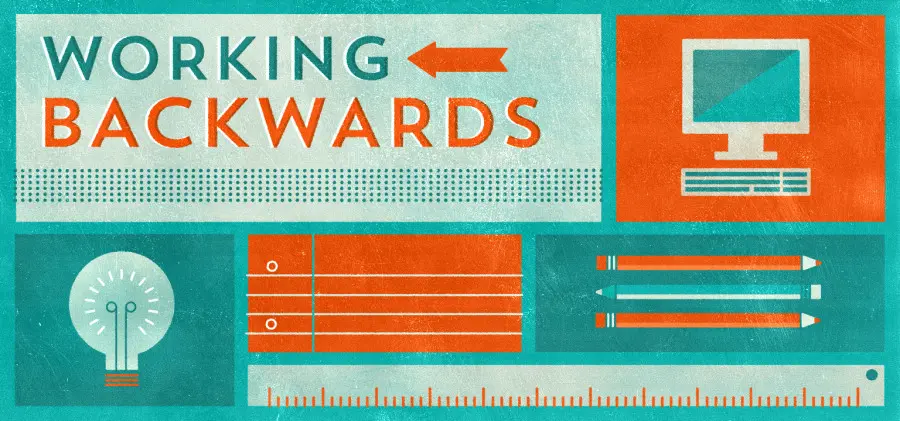It’s a given that every client engagement is going to differ, in some ways, from what was originally envisioned or scoped.
Nearly everyone who works in professional services for even a short while knows this. A big part of the service you provide comes by making sure that the risks are mitigated and a successful outcome is the end result.
Since this reality is no secret, it can’t really be used as an excuse for not getting things done.
Rather than allowing less than perfect elements of a project to get in the way, make sure you empower yourself, your team and your client to continue moving forward no matter what.
Work Backwards
One pitfall at the outset of the project is the failure to define what the final product or deliverable will be.
It’s not always easy for your client to articulate this, so remove that burden. Clients are usually great at explaining a pain point, so often times it’s easier to start with defining those and use that knowledge to define a result that addresses the pains.
With the end goal set you and your team can plan what needs to be done to get there.
Raze Walls
One great part about working in software development consulting is that you are constantly challenged with working with your clients to provide the best possible solution that each situation merits. Clients are reaching out to you because they can’t accomplish a task without your help.
This means there are obstacles in the way. They could be budget, lack of people, technical or time related. Regardless – these obstacles are now something you’ve inherited – but that’s okay. Good, in fact.
Here’s why – you’ve been hired because you’re an expert in your field. So be one. Take it and run.
You will never get rid of obstacles and constraints but since you and your team know the pain points you’re solving for you can allow yourself to focus on those rather than the constraints at hand:
- Client’s backend team not working fast enough?
- Show how your team can help – you can spend time waiting or likely get more done faster by jumping in
- Budget not there to accomplish everything?
- Suggest plug-ins and tools where they make sense
- Bloated MVP?
- Pare down to what’s core to the solution – the beauty of development is that it’s iterative
- Client’s outside vendor relationship putting the timeline at risk?
- Propose a solution to the client – you’ll get to write a CR and finish the work
Lead the Way
Closed questions are always better than open.
Here’s an example – which would you rather be asked?
- “Have you ever considered using Parse to integrate Facebook into iOS?”
- “How do you plan on managing Facebook integration in iOS since Facebook changes their APIs all the time?”
It’s subtle, but by presenting a possible solution in your question you’ve empowered the client to make a decision he or she owns on the spot. The worst case is that you get more information on why the client isn’t considering a given path.
By presenting options to the client you are in a position to advise and execute instead putting yourself on the back foot to respond to a time line and project scope you no longer control.
At the end of the day the main objective is to create a relationship where you can allow your client to look good within his or her organization.
If you focus on interpreting what’s been given to you, ask leading questions and overcome shortfalls to achieve the best outcome your organization will gain trust and more business.
What can be better than that?




